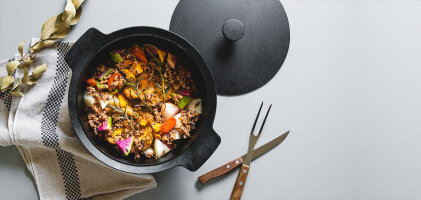Miso ramen, Japanese recipe

Miso and ramen - the main ingredients of Japanese soul food
Among the key ingredients of Miso Ramen are, as the name suggests, miso paste and ramen noodles. Ramen refers to both noodles made from wheat flour, salt, and Kansui water, as well as the noodle soup prepared from them. Kansui is water from Lake Kan in Inner Mongolia, known for its high potassium and sodium carbonate content. In Japan, Kansui water can be purchased in bottles, often artificially produced.
In addition to the typical Japanese sushi, which is usually served on special occasions, the Land of the Rising Sun has much more to offer culinarily. Japanese cuisine is notably low in fat and meat. Little oil is used for cooking, and spices are sparingly applied. Traditionally, Japanese meals consist mainly of rice, noodles, fish, and seafood. Vegetables and fish are often served raw or lightly cooked. Soba, Somen, Udon, and Ramen are among the typical Japanese noodle varieties. The latter is used for the national dish of the Land of the Rising Sun - Miso Ramen. This Japanese noodle soup is particularly popular on the island of Hokkaido, as it originally hails from Sapporo, the capital of Hokkaido.
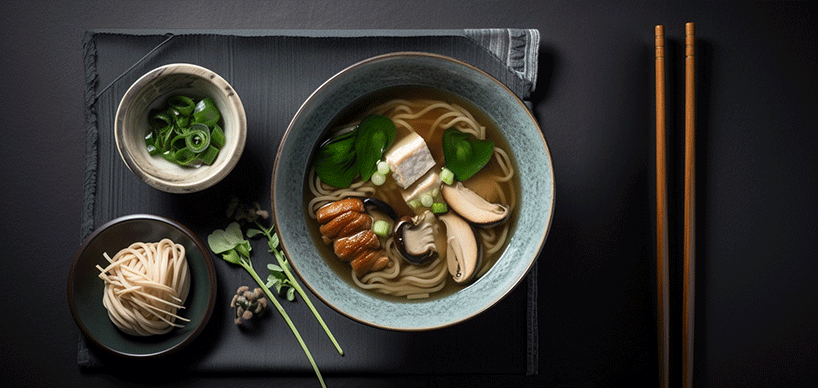
Miso is a seasoning paste made from soybeans, koji rice, grains, and salt. Miso is created through the fermentation of rice with the addition of mold. This process can last for many months to years, depending on the type of miso paste. Translated, Miso roughly means "source of flavor", and its taste is referred to as Umami. This term describes a savory, salty, spicy, and at the same time, meaty flavor. In Japanese cuisine, Miso paste is used in many dishes, such as miso soup. There are over 1000 different varieties of the Japanese seasoning paste. It is even believed to slow down the aging process and is considered one of the reasons for the many centenarians in Japan. Miso paste and ramen noodles can be found in Asian stores or well-stocked supermarkets with an Asian section.
Fast food or haute cuisine?
For some Japanese, ramen is their daily bread. In the numerous small fast-food restaurants where you order your dish from a ticket machine, the noodle soup is served quickly and consumed just as fast. Especially office workers, the so-called Salarymen, don't have much time to spare during their breaks and slurp down the broth within a short time. Why do they slurp, you may wonder? Slurping is the most effective way to prevent ramen from splattering around, cool down the noodles, enhance the aroma, and, at the same time, express to the chef how delicious their dish is – a quirk of Japanese culture.
The chefs who take great pride in their craft work in many branches of famous ramen restaurants, such as Ichiran, where customers can even customize their ramen bowl. Like sushi masters, ramen chefs must learn to prepare the perfect bowl of ramen for at least five years, often a lifelong journey. For some, it's a change after a stressful office career; for others, it's a calling. Since the Japanese ramen boom in the '80s, they often wear uniforms reminiscent of Buddhist monks. This association with Japanese traditions distracts from the fact that ramen is actually anything but traditional.
Miso-Ramen Recipe
 4 portionsNo. of persons
4 portionsNo. of persons
 at least 3h - or overnight Preparation time
at least 3h - or overnight Preparation time
 ca. 30 minutesTotal Time
ca. 30 minutesTotal Time
 easyLevel of difficulty
easyLevel of difficulty
 main mealDish
main mealDish
 ca. 350kcal per portionCalories
ca. 350kcal per portionCalories
 Vegetarian
Vegetarian
 Alcohol
Alcohol
 Kitchenware
Kitchenware
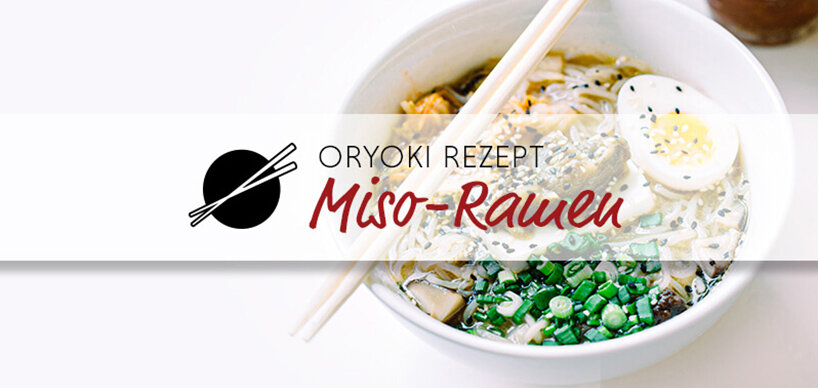
The warming Japanese noodle soup is particularly well-suited for the upcoming cold season. In Germany as well, Japanese ramen soup is gaining popularity. If you're now craving the delicious miso ramen, you can try the following easy-to-make recipe.
|
4
garlic cloves
|
|
50g
ginger
|
|
2
shells
|
|
2 tbsp
sesame seeds
|
|
2 tbsp
sesame oil
|
|
1 tsp
chili sauce
|
|
6 tbsp
Miso paste
|
|
2 tbsp
sugar
|
|
2 tbsp
sake
|
|
2L
stock (chicken or vegetable stock)
|
|
2 tsp
salt
|
|
1/2 tsp
white pepper
|
|
200g
Ramen noodles
|
|
4
eggs
|
|
soy sauce
|
|
Chaucu (thin strips of pork), tofu, carrots, corn, pak choi, zucchini, mushrooms, spring onions, nori leaves, pickled red ginger, edamame, shiitake mushrooms, etc. as desired.
|

For the preparation of this recipe, you should plan about half an hour. The miso paste is essential for cooking miso ramen, while the other ingredients can be varied according to your preferences. The ramen soup can also be prepared vegan or vegetarian.
Enjoy your miso ramen in typical Japanese fashion by fishing out the ramen noodles and toppings with chopsticks and slurping the broth directly from the bowl. Have fun cooking and enjoy your meal!

Unexpected success of a soup
Like many Japanese dishes, this one originally came from China but became a creation that is uniquely enjoyed worldwide. The exact origin is not precisely known, and several myths surround this national dish. One of them suggests that Chinese merchants brought the soup in the form of lamian to Yokohama in the late 19th century when Japan opened up for trade with the rest of the world. Ramen was initially called Shina Soba, a new version of the soup with wheat noodles: only these noodles were made from wheat using modern noodle machines. At that time, it was primarily a simple chicken broth with noodles, focusing on quick and nutritious eating – essentially fast food. The noodle soup was initially sold on carts and in Chinese restaurants. The first proper ramen restaurant opened in Tokyo's Asakusa in 1910: the Rairaiken chain was born, and with it, ramen became a permanent part of Japanese cuisine.
During the American occupation after World War II, ramen and other wheat-based dishes served as a substitute for rice, which was challenging to obtain. However, in the 1980s, this "poor man's food" became a nationwide trend. Today, ramen is a complex and handmade dish loved worldwide, and its creation has become a symbol of modern Japan.
Ramen noodles and ingredients for the most popular noodle dish in Japan can be found in almost all Japanese supermarkets today. As a contrast to home cooking, instant ramen, also known as Cup Noodles, is popular worldwide as fast food. The invention by the Nissin company in the 1970s was even chosen as the best invention of 20th-century Japan – by the Japanese themselves! In the United States, ramen can also be found in a burger: the noodles are pressed into a burger bun shape, fried, and combined with other usual ingredients and soy sauce to create the ramen burger. However, despite all culinary adventures, nothing beats a bowl of homemade Japanese ramen. What makes it so special?
Ramen is more than just noodles
One must first know what ramen is made of. One crucial element is the broth, which can be light to hearty, clear (Chintan) to cloudy (Paitan). Creamy Paitan is created through intense cooking at high heat, while Chintan must be prepared below boiling temperature. The soup base often relies on pork or chicken, sometimes beef, dried fish, or a combination of vegetables, seaweed, and mushrooms. The umami flavor, highly valued in ramen, comes from ingredients like bones and fat, contributing to the rich aroma of the soup. Interestingly, the noodles, an essential component of the soup, are also called ramen and are either handmade in larger restaurants from wheat flour, salt, and special sodium-rich water (Kansui) – or purchased fresh. There are various types, ranging from thin to thick, straight to wavy, and from white to yellow. Wavy and thin noodles pair best with light broths, while the straight and thick variety is more commonly found in hearty soups.
Furthermore, there are three flavor bases (Tare) to distinguish. Tare – "sauce" – is the salty essence, often made from seaweed, sake, soy sauce, mirin, and other (secret) ingredients at the bottom of every ramen bowl, and there are various versions of it. These usually align with a specific type of broth. The most common Tare is Shio – "salt," resulting in the clearest broth, typically made from chicken and sometimes with a hint of pork flavor. Shoyu means "soy sauce": in this case, it has a base of soybeans, and the brown, clear soup is usually made from chicken but may also include pork, beef, or fish. Like miso soup, Miso Ramen is based on miso paste from fermented soybeans. Tonkotsu, on the other hand, is ramen made from pork bones. They are boiled until they dissolve, producing a cloudier broth, sometimes mixed with pork or chicken broth.
Finally, the toppings are added to the soup. Some common toppings found on a bowl of ramen include:
- Fermented bamboo shoots (Menma)
- Moyashi or bean sprouts, a must-have in ramen
- Soaked Wakame or Nori (roasted, chopped seaweed sheets)
- Chopped spring onions or cabbage
- Enoki mushrooms or elder mushrooms
- Pickled ginger (Beni Shoga) or pressed garlic for spiciness
- Corn kernels, often found in Miso and Shio ramen, sometimes with butter
- Narutomaki: Small fish cakes that adorn the bowl, or other seafood
- Ground meat or bacon
- Chashu: Slices of roasted or braised fatty pork are the most popular type of topping
- Kakuni involves pieces of pork belly braised in soy sauce
- Various spices and oils to enhance the flavor experience

The best ramen in Japan?
Ramen can be found almost everywhere in Japan: In approximately 30,000 restaurants nationwide, the noodles are often offered under the name Chuka Soba ("Chinese Soba"). Each restaurant specializes in one or more types of ramen. Like most Japanese dishes, ramen has various local versions, more than 20 in this case! It's not so easy to distinguish them – you first need to know where to find them. Here are the ramen capitals of Japan from north to south:
- Sapporo: In Hokkaido, the northernmost island of Japan, people love ramen. No wonder, as a hot bowl of noodles is perfect in the cold winter there. Hokkaido is the birthplace of Miso Ramen, popular all over Japan as hearty Sapporo Ramen. Also known from Hokkaido is the oily, Shoyu-based Asahikawa Ramen
- Yamagata: This prefecture has the highest number of ramen restaurants per capita in all of Japan. The residents are passionate ramen enthusiasts, and you should definitely try the cold variant, Hiyashi
- Kitakata: As the birthplace of one of the most important ramen types, Kitakata in Fukushima Prefecture is a pilgrimage site for noodle soup fans. Kitakata Ramen has a light broth but features large noodles and sardines as toppings
- Tokyo: In the capital, special varieties were, of course, created. Tokyo Ramen is enriched with Dashi (fish broth) and is now equivalent to Shoyu varieties
- Yokohama: Where the Ramen Museum stands as the world's first gourmet theme park, you can also enjoy particularly good soup and try the best regional varieties
- Tama: Chefs there compete for the title of Ramen King. Broths are combined, chicken soup is imitated, and clams come into play. Don't miss out on the delicious inventions of the city
- Kyoto: Ramen in all flavors can also be found in Japan's cultural capital, including the specialty Torichintan – ramen with chicken broth. Inside the station building is an entire floor dedicated to soup, the Ramen Koji, where you can eat variations from all over Japan
- Osaka: If you tell a Japanese person that you've been to Osaka, you'll inevitably be asked, "Did you try ramen there?" Not only will you find a variety of budget-friendly restaurants, but also good Tsukemen, a type of ramen where noodles, broth, and toppings are served separately: the noodles are dipped into the soup and then slurped
- Wakayama: The small town south of Osaka is said to offer the tastiest ramen in Japan – a blend of Tonkotsu and soy sauce with thin noodles and Chashu
- Tokushima: The nationally popular sweet and sour brown Tonkotsu is even eaten with rice here
- Fukuoka: The city on the southern island of Kyushu is considered the ramen capital of Japan. The Hakata district is especially famous for creamy Tonkotsu ramen with Chashu on top
Cooking and eating ramen: Both an art
As diverse as ramen can be, so are the recipes. Particularly passionate chefs learn for years, let broth simmer for hours, and knead the noodle dough themselves. But despite lifelong training and consistently perfected processes, one bowl of ramen is not like another – however, you must be a true connoisseur to notice the difference. And also, to effortlessly enjoy ramen, which is not quite easy at the beginning. After serving, you should consume the portion immediately before the ingredients soak too much in the broth and the whole thing becomes cold. Before you can drink the soup, the ingredients are eaten with chopsticks. A Chinese spoon with a short handle and a deep bowl helps to keep the long noodles and toppings in check.
After World War II, before the ramen boom in Japan, western ingredients such as wheat were promoted by the Japanese government as healthier than rice-based traditional dishes. That can be debated – but it still doesn't make ramen an unhealthy indulgence. Ramen offers fresh noodles and a variety of vegetables, and for those concerned about nutritional value, opting for lighter broth varieties is a good idea. This way, ramen has less than 500 calories – especially if you don't drink the broth but only enjoy the flavor it gives to the noodles.
For those who want more, you can also have a serving of Gyoza: a kind of Chinese dumplings with minced meat filling, which is often served with ramen in Japan. To round off the enjoyment, a glass of Japanese beer pairs perfectly.
Miso ramen recipe with yakibuta
 4 portionsNo. of persons
4 portionsNo. of persons
 4-5h or overnight Preparation time
4-5h or overnight Preparation time
 ca. 60 minutesTotal Time
ca. 60 minutesTotal Time
 easyLevel of difficulty
easyLevel of difficulty
 mDish
mDish
 ca. 650kcal per portionCalories
ca. 650kcal per portionCalories
 Meat
Meat
 Alcohol
Alcohol
 Kitchenware
Kitchenware

|
1.5 L
water
|
|
20g
sliced ginger
|
|
2
pressed garlic cloves
|
|
3-4
spring onions
|
|
225g
minced pork
|
|
8x3cm
seaweed leaf
|
|
5-6 tbsp
miso paste
|
|
1 tbsp
soy sauce
|
|
2 tbsp
sake
|
|
1/2 tsp
sugar
|
|
1/4 tsp
chili paste
|
|
2 tbsp
sesame oil
|
|
1
grated garlic clove
|

|
400g
thin noodles
|
|
2L
water
|
|
2 tbsp.
baking powder
|
|
1
egg, boiled and halved
|
|
pork in slices
|
|
finely chopped spring onions
|
|
corn, fried in a pan with butter and salt
|
|
nori seaweed leaf
|
|
other toppings to taste
|

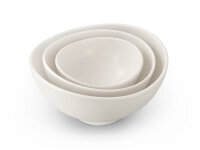







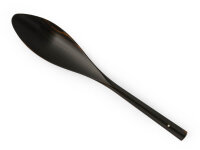










-from-the-yakiyaki-grill-pan.jpg)



